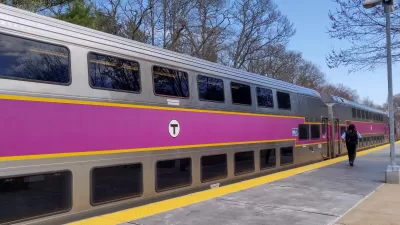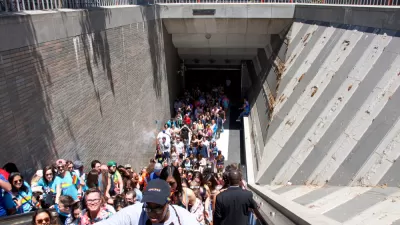Transit ridership has surged in other countries but lags here in the United States. The possible reasons for this are varied as are proposed solutions for improving American transit systems.

Aditi Shrikant considers the current state of transit in the United States and reasons for the lack of public concern about quality of service and public investments. Ridership here is much lower than in Asian and European countries, and Shrikant points out that the most robust transit systems are in large northern and coastal cities.
American public transit has faced a myriad of problems, including safety issues, political resistance and controversy, and negative public perceptions. One reason it has not improved may be that Americans do not use public transit enough or fully understand how systems operate, and so they have less interest in transit policy and funding.
Another possibility is that the United States has not developed the kinds of modern transit systems seen in other countries. As a result, it lags behind in providing the state-of-the-art transit needed to transport large numbers of people.
One solution to boost public transit looks to shift travelers’ incentives rather than focusing on expanding transit systems, reports Shrikant. For example, higher gas prices and congestion charges are two disincentives to driving that encourage people to move to transit.
FULL STORY: Why US public transportation is so bad — and why Americans don’t care

Planetizen Federal Action Tracker
A weekly monitor of how Trump’s orders and actions are impacting planners and planning in America.

San Francisco's School District Spent $105M To Build Affordable Housing for Teachers — And That's Just the Beginning
SFUSD joins a growing list of school districts using their land holdings to address housing affordability challenges faced by their own employees.

The Tiny, Adorable $7,000 Car Turning Japan Onto EVs
The single seat Mibot charges from a regular plug as quickly as an iPad, and is about half the price of an average EV.

With Protected Lanes, 460% More People Commute by Bike
For those needing more ammo, more data proving what we already knew is here.

In More Metros Than You’d Think, Suburbs are Now More Expensive Than the City
If you're moving to the burbs to save on square footage, data shows you should think again.

The States Losing Rural Delivery Rooms at an Alarming Pace
In some states, as few as 9% of rural hospitals still deliver babies. As a result, rising pre-term births, no adequate pre-term care and "harrowing" close calls are a growing reality.
Urban Design for Planners 1: Software Tools
This six-course series explores essential urban design concepts using open source software and equips planners with the tools they need to participate fully in the urban design process.
Planning for Universal Design
Learn the tools for implementing Universal Design in planning regulations.
Smith Gee Studio
City of Charlotte
City of Camden Redevelopment Agency
City of Astoria
Transportation Research & Education Center (TREC) at Portland State University
US High Speed Rail Association
City of Camden Redevelopment Agency
Municipality of Princeton (NJ)





























